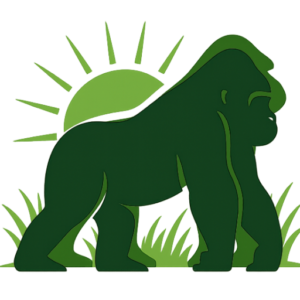How Long Does Gorilla Trekking Takes, Is It Difficult & How Fit Should You Be?
Introduction to the Gorilla Trekking Experience
Gorilla trekking is one of Africa’s most remarkable adventures — a journey deep into the misty rainforests of Uganda, Rwanda, or the Democratic Republic of Congo to meet the world’s last remaining mountain gorillas. It’s not just a wildlife experience; it’s a physical and emotional pilgrimage through ancient landscapes that echo with life.
But one of the most common questions travelers ask before booking a trek is: “How long does gorilla trekking take? Is it difficult? And do I need to be very fit?” The answer depends on several factors — including the gorilla group you’re assigned, the weather, terrain, and your overall level of fitness. Every trek is unique, but understanding what to expect helps you prepare for a safe, comfortable, and rewarding experience.
How Long Does Gorilla Trekking Take?
A typical gorilla trekking excursion takes between 2 and 8 hours from start to finish. This includes hiking through forest trails to locate the gorilla family and spending a maximum of one hour observing them once you find them.
Each morning begins with a briefing at the park headquarters — at Buhoma, Rushaga, or Nkuringo in Bwindi Impenetrable National Park (Uganda), or Kinigi in Volcanoes National Park (Rwanda). During this session, rangers assign small groups of visitors (usually eight people) to different gorilla families based on their hiking ability and the group’s location that day.
Some gorilla families live close to the park boundary and can be reached in less than an hour of hiking, making for an easy to moderate trek. Others, however, roam deep within the forest or higher up the slopes, requiring 4 to 6 hours (or even longer) of hiking through thick vegetation, steep ridges, and muddy terrain.
It’s important to note that no two treks are alike — the gorillas are wild and move daily in search of food, so distances and durations vary greatly. The average trekking experience lasts around 4 to 5 hours total.
How Difficult Is Gorilla Trekking?
The difficulty of gorilla trekking largely depends on the terrain, altitude, and your fitness level. In general, gorilla trekking is considered moderately challenging. It’s not a technical climb, but the steep slopes, slippery paths, and dense vegetation can make it strenuous, especially in wet conditions.
In Uganda (Bwindi and Mgahinga)
Bwindi Impenetrable National Park is known for its rugged topography — a mix of steep hills and narrow valleys at altitudes between 1,200 and 2,600 meters (4,000–8,500 feet). The forest floor can be muddy, and the vegetation thick, requiring you to push through vines and shrubs. The word “Impenetrable” truly describes its terrain.
Mgahinga Gorilla National Park, though smaller, lies on the slopes of the Virunga Volcanoes, meaning treks often involve uphill climbs with breathtaking views.
In Rwanda (Volcanoes National Park)
Rwanda’s Volcanoes National Park is slightly easier because the vegetation is more open and the slopes more gradual. The trails are well maintained, and the park’s smaller size means treks are generally shorter. However, you’ll still be hiking at high altitudes — between 2,400 and 3,500 meters (8,000–11,500 feet) — which can make breathing a bit more challenging.
In Congo (Virunga National Park)
Virunga’s terrain resembles Rwanda’s, with moderate climbs through volcanic slopes and tropical forest. The trails can be muddy after rainfall, but overall, the hikes are manageable for most travelers in good health.
How Fit Do You Need to Be?
You don’t have to be an athlete to enjoy gorilla trekking, but a reasonable level of physical fitness is important. Trekkers should be able to walk for 2 to 6 hours on uneven terrain, sometimes uphill and in humid conditions.
To prepare, consider light cardio exercises before your trip — brisk walking, hiking, cycling, or stair climbing to build endurance. Stretching and leg-strengthening exercises help too, especially for handling steep trails. Even moderate preparation will make your trek far more enjoyable.
The park authorities are very understanding of different abilities. During the briefing, visitors are grouped based on their fitness level. If you request an easier trek, rangers can assign you to a gorilla family closer to the trailhead.
For elderly travelers or those with mobility challenges, porters are available to assist by carrying bags, helping with slippery sections, or even transporting trekkers using sedan chairs. These porters are local community members, and hiring them not only provides comfort but also supports local livelihoods.
Altitude and Weather Considerations
Because gorilla habitats lie at high altitudes, you may experience mild shortness of breath, especially if you’re not used to thinner air. Staying hydrated, pacing yourself, and taking regular breaks will help.
The weather in these regions can change quickly — it may be sunny one minute and raining the next. The trails can become muddy and slippery after rain, which adds to the challenge. Wearing waterproof hiking boots, a rain jacket, and gaiters is highly recommended.
How to Prepare for the Trek
A successful gorilla trek starts with preparation. Here are key things to consider before setting out:
-
Wear sturdy hiking boots for traction and ankle support.
-
Bring lightweight rain gear, as the forest is wet year-round.
-
Carry enough drinking water and snacks to maintain energy levels.
-
Use a walking stick (provided at park headquarters or available from porters).
-
Dress in long pants and sleeves to protect against stinging plants and insects.
-
Hire a porter — not only to assist but to make the trek more comfortable.
The Reward at the End
No matter how long or difficult the journey, the moment you come face-to-face with a gorilla family makes every step worthwhile. Watching a massive silverback quietly chew bamboo or a baby tumble playfully beside its mother is a moment of pure magic. The rangers will guide you on how to behave — keeping a 7-meter distance, avoiding direct eye contact, and speaking softly.
The hour spent with the gorillas passes quickly, but it’s filled with emotion — awe, humility, and connection. Most trekkers describe it as life-changing, a once-in-a-lifetime encounter that lingers forever in memory.
Final Thoughts
So, how long does gorilla trekking take, and is it difficult? It takes anywhere from 2 to 8 hours, and while it can be physically demanding, it’s absolutely achievable for anyone with average fitness and determination. Preparation, patience, and a positive attitude go a long way.
Gorilla trekking is not a race — it’s a journey into one of the planet’s last true wildernesses. Every step through the forest brings you closer not only to the gorillas but to a deeper understanding of nature’s beauty and your place within it.





